How coal is used:
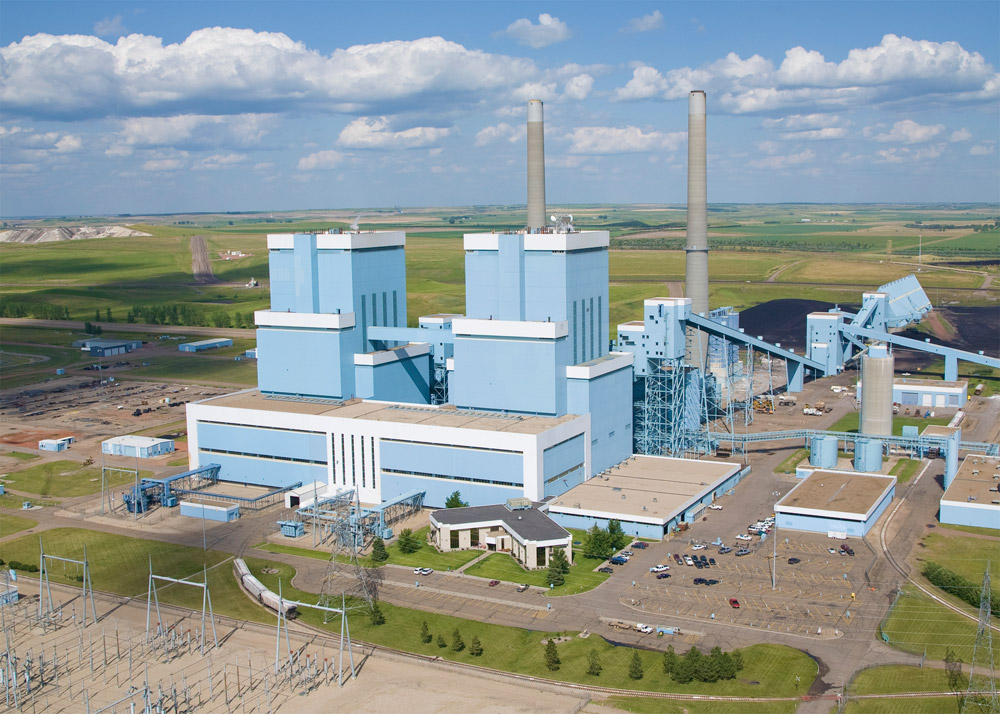
North Dakota Air Quality: North Dakota is one of seventeen states to meet all air quality standards set by the federal (United States) government (as of 2013). North Dakota's "coal country" consistently receives a grade "A" in air quality from the American Lung Association. North Dakota SOTA Report 2022 | American Lung Association Photo of Antelope Valley Station near Beulah is courtesy of Basin Electric Power Cooperative.
- About 30 million tons of lignite coal are mined each year in North Dakota.
- Nearly 80 percent of North Dakota's lignite is used to generate electricity.
- Electrical power plants in North Dakota are fueled by lignite coal. BSC Energy Resource Tool: Visit the Bismarck State College Education Tool to see how burning coal can create electricity. Then check out the Energy Flow page to see how power gets from the plant to your house.
- The coal is burned to produce heat and warm water to make steam that turns a generator.
- When coal is burned, emissions (gases and particles in the exhaust from burning coal) are produced.
- North Dakota power companies have spent approximately 2 billion dollars ($2,000,000,000) in new technologies to control these emissions.
- "Scrubbers" are devices that remove pollutants from the exhaust before it is released into the air.
- Particles called fly ash are removed from the exhaust using a giant filter called a baghouse.
- North Dakota power companies have spent approximately 2 billion dollars ($2,000,000,000) in new technologies to control these emissions.
- Fly ash trapped by the baghouse is recycled and used for many purposes, including building roads and concrete for homes and buildings. In North Dakota, fly ash was used in the building of the Fort Mandan Visitors Center in Washburn and the National Energy Center of Excellence at Bismarck State College.
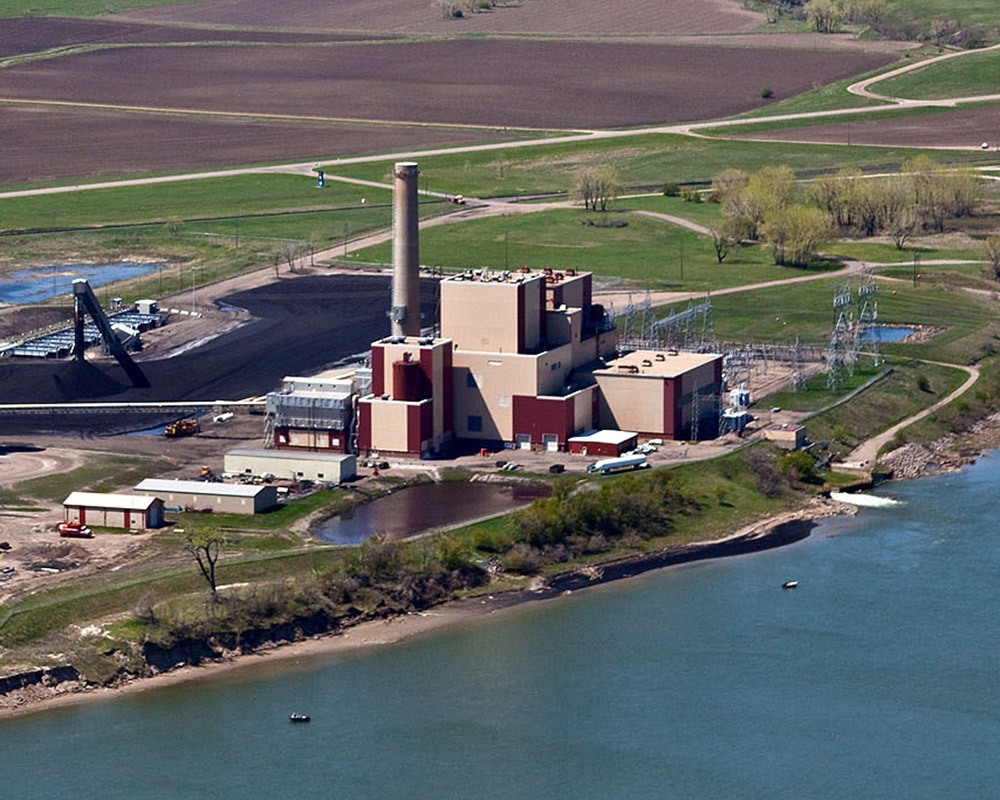
North Dakota's Largest Power Plant: Coal Creek Station, the largest power plant in North Dakota, produces about 1,141 megawatts of power. One megawatt hour can provide one hour of electricity to approximately 800 homes. Photo courtesy of Rainbow Energy.
- The exhaust seen coming out of the stackA stack on a power plant acts like a chimney and allows exhaust to leave the plant. at a coal-based power plant is almost all water vapor. This is why people don't see much coming from the stack in the summer, but a large cloud is seen in the winter. Just above the stack is clear until the water cools enough to condense.
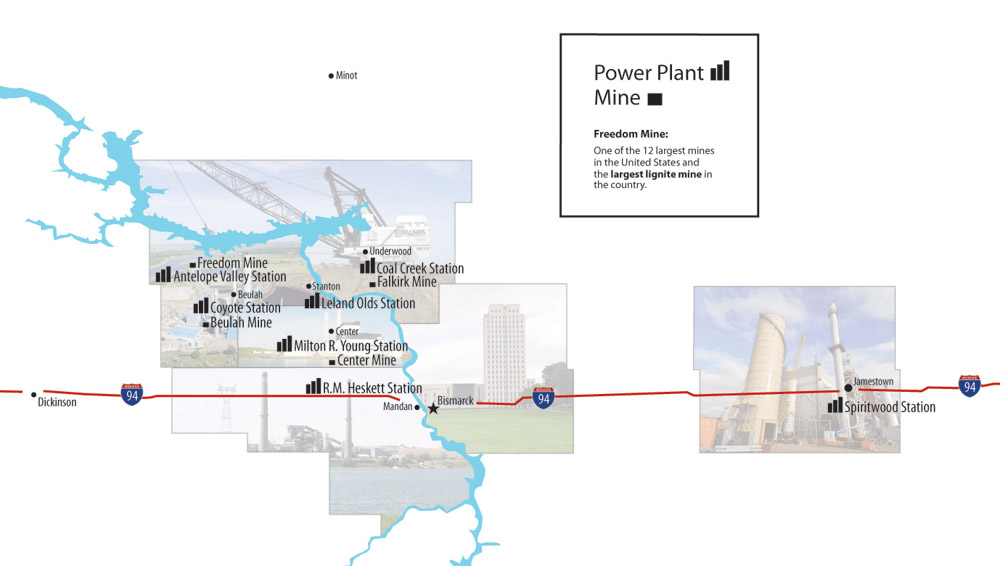
Map of Coal Country: This map shows the location of North Dakota's lignite mines and coal-based power plants. Photo courtesy of Lignite Energy Council.
- The following power plants generate electricity from North Dakota or Montana lignite coal:
- Coal Creek Station – near Underwood
- Antelope Valley Station – near Beulah
- Coyote Station – near Beulah
- Leland Olds Station – near Stanton
- Milton R. Young Station – near Center
- Spiritwood Station – a combined heat and power plant near Spiritwood
- A combined heat and power plant means that the steam created at Spiritwood Station to create electricity will also be used to provide steam at a nearby malting plant and ethanol plant. This process saves money for all of the plants by getting the most use possible out of the steam.
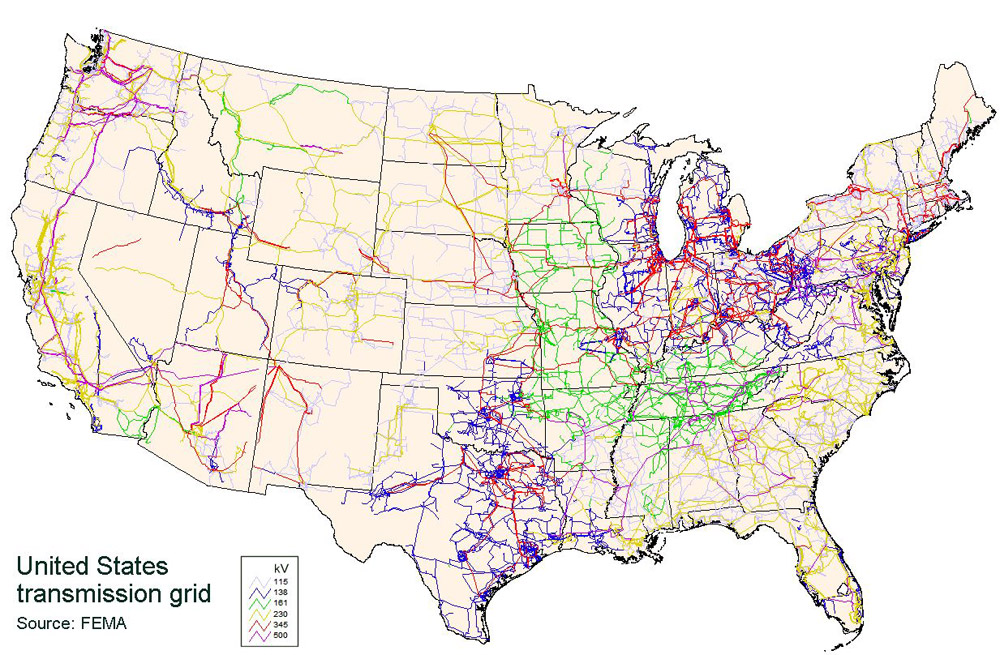
US Power Lines: This map shows high voltage transmission lines throughout the United States – 115 kilovolts and up. The smaller distribution lines (wires that carry electricity to homes) are not shown on this map. Map courtesy of the Federal Emergency Management Agency.
- Almost all of the people in North Dakota, as well as 1.5 million people in surrounding states use electricity produced from North Dakota lignite.
- Lignite is turned into electricity in power plants and transmitted to users throughout the region.
- Power lines carry electricity to all parts of North Dakota, as well as to surrounding states.
- North Dakota has more than 65,000 miles of distributionDistribution lines carry lower-voltage electricity from a local substation to nearby homes and transmissionTransmission lines are high-voltage lines that carry electricity long distances. lines. Transmission lines are high-voltage lines that carry electricity long distances. Distribution lines carry lower-voltage electricity from a local substation to nearby homes.
- Lignite is turned into electricity in power plants and transmitted to users throughout the region.
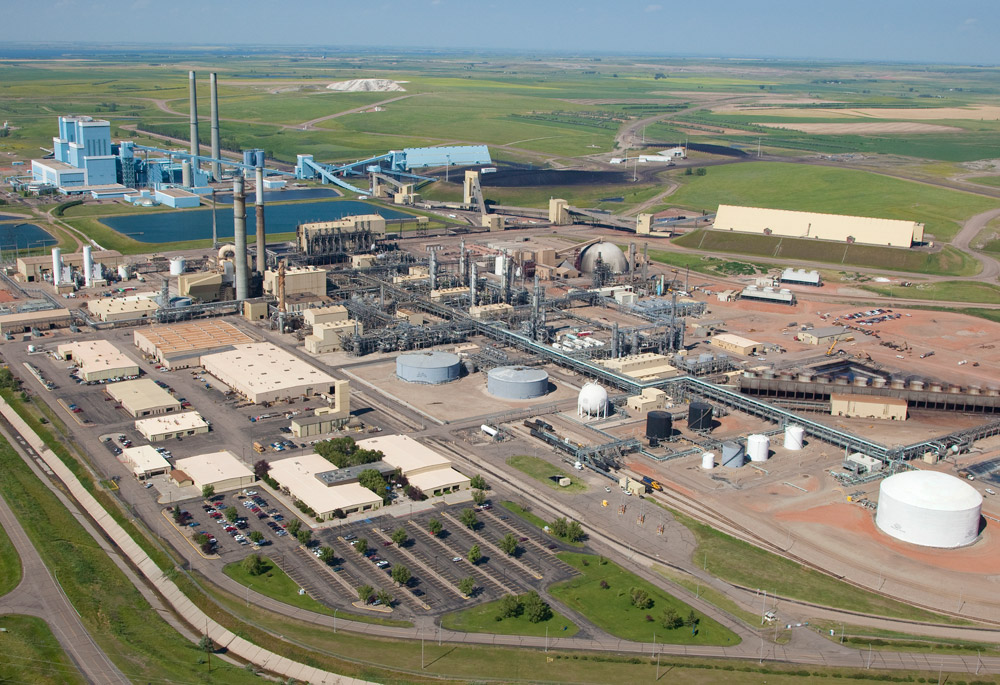
Energy Campus: In order to save money on transportation costs, North Dakota's power plants are located near the mines. This picture shows the Antelope Valley Station, the Great Plains Synfuels Plant, and the Freedom Mine near Beulah. Both plants use coal from the Freedom Mine to cut down on transportation costs. Photo courtesy of Basin Electric Power Cooperative.
Lignite Coal: Learn more about lignite coal and its benefits to North Dakota. Video courtesy of Lignite Energy Council.
- About 20 percent of North Dakota's lignite is used to make syntheticSynthetic means something that is made by people, not by nature. natural gas and fertilizer products through coal gasification.Gasification (gas-ah-fah-KAY-shun) is the process of changing something into the form of gas. In North Dakota, synthetic natural gas is made from lignite coal. Synthetic means something that is made by people, not by nature. Gasification (gas-ah-fah-KAY-shun) is the process of changing something into the form of gas. In North Dakota, synthetic natural gas is made from lignite coal.
- The Great Plains Synfuels Plant near Beulah is the only coal gasification plant in the United States that makes synthetic natural gas from lignite coal.
- About 18,000 tons of lignite coal are used each day to create synthetic natural gas.
- This coal comes from the Freedom Mine.
- The Northern Border Pipeline transports the synthetic natural gas to the eastern part of the United States.
- About 18,000 tons of lignite coal are used each day to create synthetic natural gas.
- The Great Plains Synfuels Plant near Beulah is the only coal gasification plant in the United States that makes synthetic natural gas from lignite coal.


